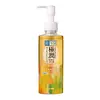What's inside
What's inside
 Key Ingredients
Key Ingredients

 Benefits
Benefits

 Concerns
Concerns

 Ingredients Side-by-side
Ingredients Side-by-side

Water
Skin ConditioningCaprylic/Capric Triglyceride
MaskingSqualane
EmollientPropylene Glycol Dicaprylate/Dicaprate
EmollientPropylene Glycol
HumectantCorylus Avellana Seed Oil
EmollientPentylene Glycol
Skin ConditioningPrunus Amygdalus Dulcis Oil
Skin ConditioningGlyceryl Stearate
EmollientTriticum Vulgare Germ Extract
Skin ConditioningTocopheryl Acetate
AntioxidantEthyl Oleate
EmollientEthyl Linoleate
EmollientCetyl Palmitate
EmollientLaureth-7
EmulsifyingEthyl Linolenate
EmollientCetearyl Isononanoate
EmollientCeteareth-20
CleansingCeteareth-12
EmulsifyingCetearyl Alcohol
EmollientPolyacrylamide
C13-14 Isoparaffin
EmollientCaprylyl Glycol
EmollientP-Anisic Acid
MaskingWater, Caprylic/Capric Triglyceride, Squalane, Propylene Glycol Dicaprylate/Dicaprate, Propylene Glycol, Corylus Avellana Seed Oil, Pentylene Glycol, Prunus Amygdalus Dulcis Oil, Glyceryl Stearate, Triticum Vulgare Germ Extract, Tocopheryl Acetate, Ethyl Oleate, Ethyl Linoleate, Cetyl Palmitate, Laureth-7, Ethyl Linolenate, Cetearyl Isononanoate, Ceteareth-20, Ceteareth-12, Cetearyl Alcohol, Polyacrylamide, C13-14 Isoparaffin, Caprylyl Glycol, P-Anisic Acid
Ethylhexyl Palmitate
EmollientSorbeth-30 Tetraisostearate
EmulsifyingOlea Europaea Fruit Oil
MaskingWater
Skin ConditioningPEG-20 Glyceryl Triisostearate
EmollientCaprylyl Methicone
Skin ConditioningDextrin Palmitate/Ethylhexanoate
EmulsifyingCaprylic/Capric Triglyceride
MaskingBHT
AntioxidantMacadamia Ternifolia Seed Oil
EmollientPentaerythrityl Tetra-Di-T-Butyl Hydroxyhydrocinnamate
AntioxidantTocopherol
AntioxidantBenzotriazolyl Dodecyl P-Cresol
UV AbsorberSimmondsia Chinensis Seed Oil
EmollientRosa Canina Fruit Oil
EmollientMoringa Oil/Hydrogenated Moringa Oil Esters
Skin ConditioningHydroxypropyltrimonium Hyaluronate
Sodium Acetylated Hyaluronate
HumectantMethylparaben
PreservativeAscorbyl Dipalmitate
AntioxidantEthylhexyl Palmitate, Sorbeth-30 Tetraisostearate, Olea Europaea Fruit Oil, Water, PEG-20 Glyceryl Triisostearate, Caprylyl Methicone, Dextrin Palmitate/Ethylhexanoate, Caprylic/Capric Triglyceride, BHT, Macadamia Ternifolia Seed Oil, Pentaerythrityl Tetra-Di-T-Butyl Hydroxyhydrocinnamate, Tocopherol, Benzotriazolyl Dodecyl P-Cresol, Simmondsia Chinensis Seed Oil, Rosa Canina Fruit Oil, Moringa Oil/Hydrogenated Moringa Oil Esters, Hydroxypropyltrimonium Hyaluronate, Sodium Acetylated Hyaluronate, Methylparaben, Ascorbyl Dipalmitate
 Reviews
Reviews

Ingredients Explained
These ingredients are found in both products.
Ingredients higher up in an ingredient list are typically present in a larger amount.
This ingredient is an emollient, solvent, and texture enhancer. It is considered a skin-softener by helping the skin prevent moisture loss.
It helps thicken a product's formula and makes it easier to spread by dissolving clumping compounds.
Caprylic Triglyceride is made by combining glycerin with coconut oil, forming a clear liquid.
While there is an assumption Caprylic Triglyceride can clog pores due to it being derived from coconut oil, there is no research supporting this.
Learn more about Caprylic/Capric TriglycerideWater. It's the most common cosmetic ingredient of all. You'll usually see it at the top of ingredient lists, meaning that it makes up the largest part of the product.
So why is it so popular? Water most often acts as a solvent - this means that it helps dissolve other ingredients into the formulation.
You'll also recognize water as that liquid we all need to stay alive. If you see this, drink a glass of water. Stay hydrated!
Learn more about Water